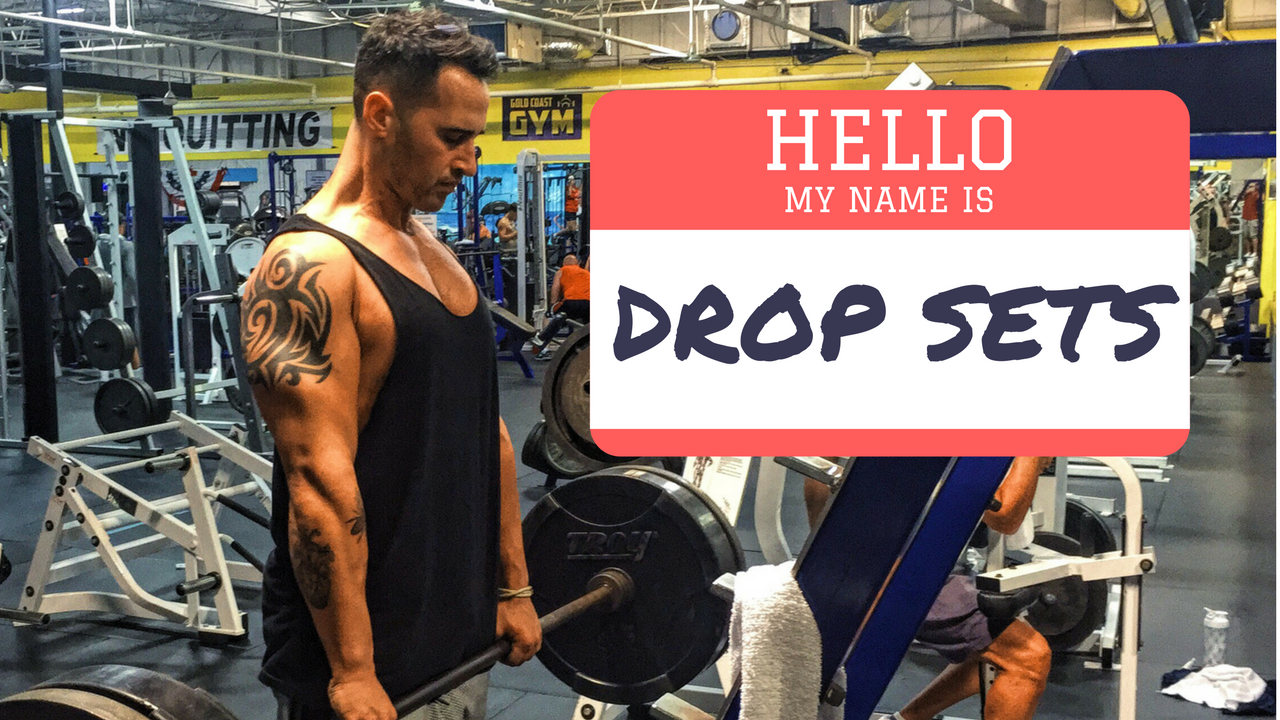
Monotony is the dagger that stabs the heart of enjoyment. Variation is the shield that keeps the pleasure alive while keeping the objective in sight.
Bodybuilders preach variety to aid in growing intensely specific areas of a muscle. Little tweaks in exercise selection or hand positioning perfect the art of their craft. Popularized during the Golden Era, you have undoubtedly heard these little gems since the moment you touched the iron. Nuggets like using barbell drag curls to develop the peaks of your biceps or single arm dumbbell arc rows to target your lower lats.
Widely popular in-home training programs have credited their success to “muscle confusion” and its effect on optimizing fat loss. While we do not agree with that term in quotations marks, performing inefficient tasks will give you an advantage in dropping those unwanted LBs.
Strength and conditioning coaches often implement a system of variations to progress and regress movements to best serve their trainee. After assessing a trainee’s movement integrity and training age, a simple kettlebell deadlift can be progressed to a conventional barbell deadlift or regressed to a basic hip hinge pattern.
As you can see, variation comes in all different shapes and sizes. It is the spice of life and workouts. The possibilities are quite literally endless. Barbells, dumbbells, kettlebells, or sandbags. Wide or close grip. Kneeling or standing. Linear or lateral. That’s just cracking the surface.
So, how about variation in athletic performance training?
In this video, we discussed how exposing your body to as many different ranges of motion and planes of motion as possible will increase your overall athleticism.
That video primarily honed in on the different variations of skipping patterns.
Now it’s time to put a little power behind your athleticism. It’s time to teach you how to pack a punch and Hulk Smash some shit.
ENTER THE MEDICINE BALL SLAM
The MedBall Slam has been a long time favorite of ours. Chances are you’ve seen it on our Instagram feed, YouTube channel, or have had it personally prescribed in our online coaching program.
And while there’s something especially satisfying and therapeutic about driving a medicine ball as hard as humanly possible into the ground, we are also aware they, too, can fall victim to monotony after a while.
ADDING A LITTLE FLAVOR
By adding simple precise movements to your medball slam, you can effectively starve off monotony, while also unchanging the exercise’s main intention (developing power, priming the CNS, increasing tissue temperature.)
The best part of adding movement to your slams is that it’s an absolute win-win scenario. In addition to upholding the integrity of the movement, you are also exposing your body to those different planes of motion to create new adaptations and ultimately, become a better athlete. Two birds, one stone…or well, medicine ball.
[video_player type=”embed” width=”853″ height=”480″ align=”center” margin_top=”0″ margin_bottom=”20″]![]() [/video_player]
[/video_player]
THE TANGO, MAMBO, AND MOONWALK
1. Single Leg Slam
Simply taking one foot away is a great place to start. By decreasing your base of support, you are placing more demand on your grounded leg, core, and proprioception needed to maintain balance.
To help maximize power, pull your free leg up as your reach your arms overhand and then drive it back forcefully as you initiate your slam. Other cues include sitting into the hip of your grounded leg and forcefully exhaling as you slam.
2. Slam + Side Step
A small lateral step is the first progression in adding movement to your slams. Mastering the timing and coordination between this simple step with the slam is imperative before advancing to more complex combinations. To quote my fellow bro and badass coach, Eric Bach:
“Success lies in the ruthless execution of the basics.”
Setting up in the same athletic position as a basic slam, take a short lateral step out as you reach your arms overhead. As you initiate the slam, your foot should make contact with the floor right before the ball does.
3. Slam + Alternating Side Step
When completing the slam + side step with a client, we will complete all of the prescribed repetitions on one side before switching to the other. This allows the brain to gain exposure to the pattern and reinforce it with repetition.
To make this movement more dynamic without changing any direction or plane of motion, you just need to simply alternate the steps. Instead of completing all repetitions on one side and then switching, you will alternate between right and left lateral steps for the prescribed number of repetitions.
4. Slam + Forward Step
Changing direction from the lateral step, the forward step is more of a lateralization than a progression. Lateralization, a term made famous by Dr. Charlie Weingroff, simply means you are staying on the same level and just moving side to side along the spectrum.
When executing the forward step, don’t step directly forward. Instead think about standing in the center of circular clock and step to the one (for right foot) and eleven (for left foot) o’clock position. This will allow you to keep your slam over your midline without slamming the ball on your foot.
5. Slam + Backwards Step
A second lateralization, the backwards step is no different than the forward step rather than the direction of the movement. Standing on that clock, your points of attack will now be the five (for right foot) and seven (for left foot) o’clock positions.
6. Slam + 3 Way Matrix
After gaining exposure to all three lateralizations, it is time to progress. Combining the three planes of motion (forward, lateral, backwards) creates a complex combination gives the brain a lot to process and adapt to. The 3-way matrix implements the one, three, and five o’clock positions for the right foot and the the eleven, nine, and seven o’clock positions for the left foot. Lastly, make sure to return to the base position between each slam rather than moving your foot straight from the forward position to the lateral position.
7. Slam + Lateral Bound
There’s no doubt that stepping in all directions is a prerequisite of athletic performance, but in the same breath, it will only get you so far. Athletes need to be able to jump, bound, leap, and pivot in order to reach their greatest potential. After becoming proficient in coordinating slams with stepping, the movement can be progressed to include bounding. Bounding, like a leap, is the action of jumping from one foot to the other. For purposes of this drill, perform the slam on the outward bound only and not while you are returning to the start position. Focus on landing soft, but solid on each bound and refrain from your knee dropping into a valgus position.
8. Slam + Bounding Matrix
The slam + bounding matrix is an extremely complex movement. Using the same 3-way matrix you already learned, you are now going to replace the stepping with bounds. Like in the lateral bound drill, only slam the ball on the outward bound and then return to the base position.
[divider style=”6″]
SLAM IT.
Start by implementing these progressions and variations in your own program appropriately and based on your goals. Use them at the beginning of your workout as a warm-up, in the meat of your session as power and speed development, or at the end as a conditioning tactic. No matter the placement, there is no doubt that these variations will assist in improving your overall athleticism and dominate the playing field.




